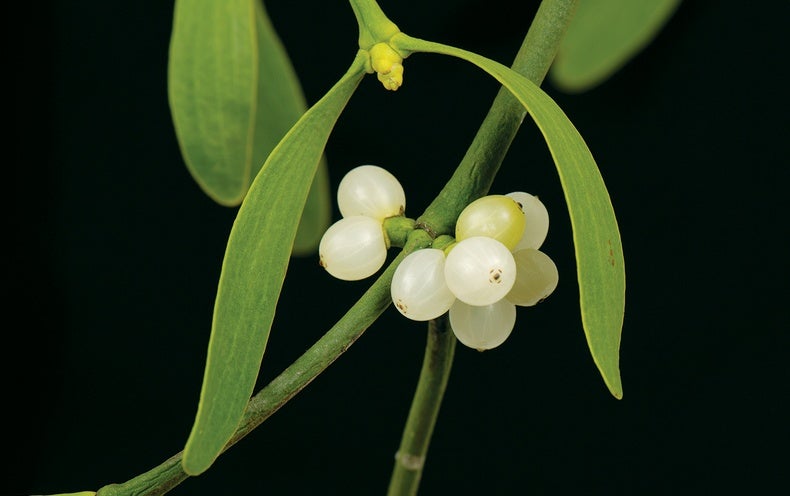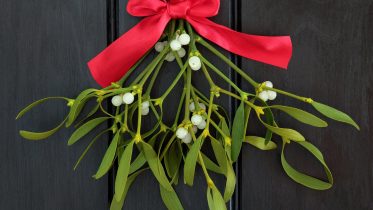
Mistletoe
Mistletoe is the common name for obligate hemiparasitic plants in the order Santalales. They are attached to their host tree or shrub by a structure called the haustorium, through which they extract water and nutrients from the host plant. The name mistletoe originally referred to the species Viscum album; it is the only species native to the British Isles and much of Europe. A related species with red rather than white fruits, Viscum cruciatum, occurs in Southwest Spain and Southern Portugal, as well as in Morocco in North Africa and in southern Africa. The genus Viscum is not native to North America, but Viscum album was introduced to Northern California in 1900. The eastern mistletoe native to North America, Phoradendron leucarpum, belongs to a distinct genus of the family Santalaceae. European mistletoe has smooth-edged, oval, evergreen leaves borne in pairs along the woody stem, and waxy, white berries that it bears in clusters of two to six.



